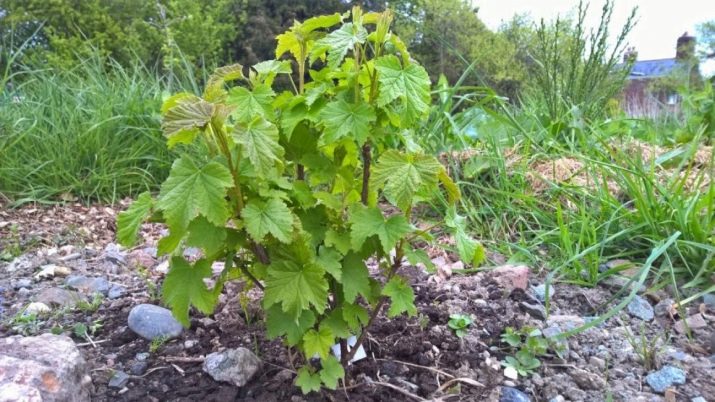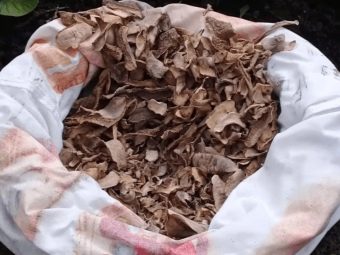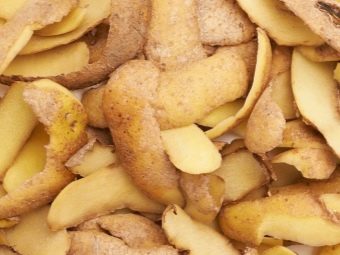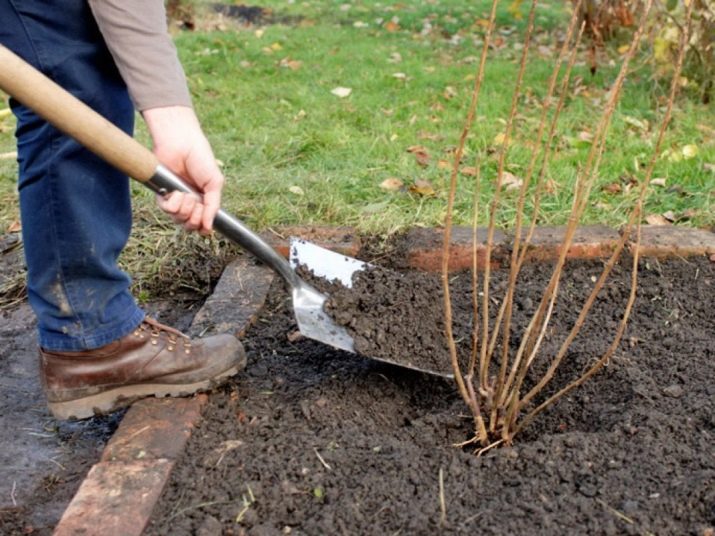What and how to feed black currants?
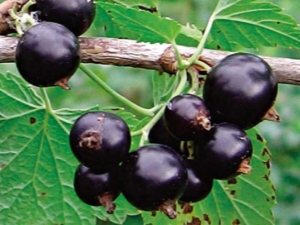
Black currant is a culture with a large amount of vitamins. Not only berries can be used for different purposes, but also leaves and stems. Currant helps to cure diseases such as vitamin deficiency, anemia. It is also useful for the common cold. Berries are both consumed fresh and used in canning.
To get a rich harvest, you must follow certain rules of care. It is especially important to regularly feed the bushes.
Need for dressings
Although the plant is considered unpretentious, it still needs fertilizing. If you do it right, then the harvest will be able to increase significantly, and the bush will delight the owners with its berries for fifteen years. Black currant has a unique ability to quickly absorb all the nutrients that gives it rapid growth and development.
Even after planting a currant bush in an ideal place (lit and protected from the wind), one can notice that it becomes sluggish and the number of berries on it decreases. This means that the currant has already taken all the useful substances out of the ground and requires additional food.
Top dressing of black currant is important at different stages of cultivation. It is needed for:
- build-up of green mass of shrubs;
- ripening berries;
- yield increase;
- recuperation after a period of fruiting;
- preservation of immunity;
- stimulation of plant growth in preparation for winter.
On too poor lands, it is necessary to fertilize bushes, of course, more often. You also need to know that you should not do top dressing from litter or urea after harvest. This can give rise to shoots that can not harden by the winter, which means they can simply die.
When fertilize?
Fertilizers need to be in different seasons. This whole lengthy process can be divided into several stages.
- In the spring, during the period when buds swell. At this time, the first feeding is done, which contributes to the development of the root system. Therefore, fertilizers must be applied appropriately.
- In May, during flowering. At this time, fertilizers are applied, which will give an increase in yield. You can use the infusion of chicken manure or mullein. It is important to remember that nitrogen cannot be introduced during the flowering period, since it will have a bad effect on currant yield.
- In June, after flowering, during fruiting. At this time, suitable infusion from the peel of potatoes. He will make the berries juicy and larger.
- In the summer, after the end of fruiting. Since the bush gives all its strength to the formation of berries, it requires their restoration. For this, wood ash or phosphate fertilizers can be used.
- In the fall, when there is a preparation for winter. At this time, fertilizing is especially necessary. You can use compost. It should be poured into one bucket under each bush.
Types of fertilizers and instructions for their use
Black currants can be fertilized with organic and mineral fertilizers. They can also be divided into liquid, which are prepared immediately before use, and solid, which are brought directly into the ground.
Mineral fertilizers
After two years after the currant bush has been planted, you can start feeding plants. From early spring to mid-summer, nitrogen fertilizers must be applied. All types of fertilizer, which include nitrogen, are quickly absorbed by the culture. After that, black currant needs more potash and phosphate fertilizers.
It is worth considering that this plant does not tolerate chlorine, so it is better to use potassium nitrate or sulfuric potassium.
All mineral fertilizers can be divided by composition into 4 groups.
- Nitrogen. With their lack of currants immediately begin to turn yellow leaves at the bottom of the bush. The most commonly used urea and ammonium nitrate. However, it is necessary to apply these fertilizers with extreme caution. It is necessary to strictly adhere to the instructions for use and to comply with the dosage.This is important, because with an excess of such substances in the plant accumulates a large amount of nitrates. Nitrogen fertilizers are applied immediately after breeding.
- Potash. Signs of a lack of such fertilizers can be observed only in the middle of the growing season. Leaves change their color, become dull. This group can include such minerals as potassium chloride or sulphate, saltpeter. These minerals not only feed the currants, but also make it more resistant to frost. Such fertilizers are applied both in spring and autumn.
- Phosphoric. With a lack of these minerals, the black currant stems become brittle and the leaves fall. These include minerals such as superphosphate or phosphorus flour. Although they are the safest substances, it is still worth adhering to the instructions for their use, so as not to "overdo it".
- Complex mineral fertilizers. This can include nitroammofosku, which includes both nitrogen and phosphorus. There is also nitrophoska, which includes nitrogen, potassium, and phosphorus.
Organic fertilizer
Many gardeners use not only mineral fertilizers, but also organic fertilizers. Consider the most popular ones.
- Chicken droppings. In order to prepare such a solution, it is necessary to take one kilogram of the product and pour it with ten liters of water. After that, you need to give the composition to infuse for one week. Then you should mix the mixture well and pour the area around the plant with it.
- Manure. The solution is prepared in the same way as in the previous version. The only difference is that top dressing is done not on the ground near the currant bush, but in the furrows dug in advance. This condition protects the roots from damage. Then the fertilizer is sprinkled with earth.
- Green mass. To prepare such a solution, it is necessary to fill the container by two thirds with green mass and pour water over it. Mixture should be brewed for one week. Then you should dilute one liter of tincture in one bucket of water. To feed, you need to pour one bucket of the composition under each currant bush.
Folk fertilizer methods
Many gardeners are trying to use for dressing black currants only folk remedies. This is not surprising, because such compositions are natural and absolutely safe. However, they can replace any mineral fertilizers. It is worth considering in more detail some of them.
- Brewer's yeast. To get such a solution, you need to pour ten pounds of water a half kilogram of yeast, and then add fifty grams of sugar. In the end, get mash, which must be insisted for several hours. After that, you can begin to water the plants. On one bush you need to pour one bucket of such bragi. The solution can completely replace one complex mineral fertilizer.
- Potato peelings. They are a great way to feed. To do this, they must be dried and crushed into powder. Then in winter, during the snowfall, they need to sprinkle currant bushes. This will help the plants to get enough potassium and form a large number of ovaries.
- If you do not want to bother with cleaning, you can use starch. To prepare such a solution, you need to take two hundred grams of starch and pour it with five liters of water. After that, the composition should be brought to a boil and cool. Then add five more liters of water. For one bush of black currant will need two liters of such liquid. During flowering, the volume of the solution is increased to three liters.
- Fish waste. They contain a large amount of phosphorus, which will help to significantly increase the yield of currants. In order to prepare the dressing, you need to grind the bones in a meat grinder, and then dry them. This powder is used to fertilize the bushes.
- Wood ash. It is considered a complex fertilizer. However, just pouring ashes under the bush will not be enough. It is necessary to make a nutrient solution.To do this, pour half a bucket of ash with water and allow the composition to infuse for two days. This mixture is enough for ten buckets of water. For feeding, you must pour one diluted bucket on a currant bush. A young plant will be enough half.
Tips
Many people like black currant. However, to get a good harvest, you need to remember about the timely application of fertilizers. If they are not enough, then you will see how the leaves turn yellow, and the harvest decreases with each passing day. However, overfeeding the plant is not recommended.
Nitrogen fertilizers need to be applied very carefully, as they make the plant vulnerable to fungal diseases. Particular attention should also be paid to the fact that the fertilizer does not contain chlorine hazardous to the crop.
In order not to harm the black currant, the soil around it is necessary to dig and carefully water. If this is not done, then the young root system will simply be burned.
Even feeding plants with liquid fertilizers, it is impossible to ignore the process of watering. Otherwise, the plant will lack fluid, which will affect its development and yield.
Because of the need to protect the roots, you should not lay chicken droppings next to the bush. When making such fertilizers, it is necessary to move thirty centimeters from the trunk. Then fertilizing should be covered with earth or a layer of mulch.
Many experienced gardeners are advised to do foliar dressing in July in order to strengthen slightly “impoverished” bushes. To do this, you can use a solution of five grams of manganese and five grams of boric acid. These components should be poured with ten liters of water, adding forty grams of copper sulfate.
Having studied all the subtleties of feeding black currant, you can safely begin to grow it. If you follow all the recommendations described, after about three or four years, you will be able to harvest a decent harvest, delighting your family with tasty and healthy fruits.
About how to feed black currants in the spring, see the following video.


